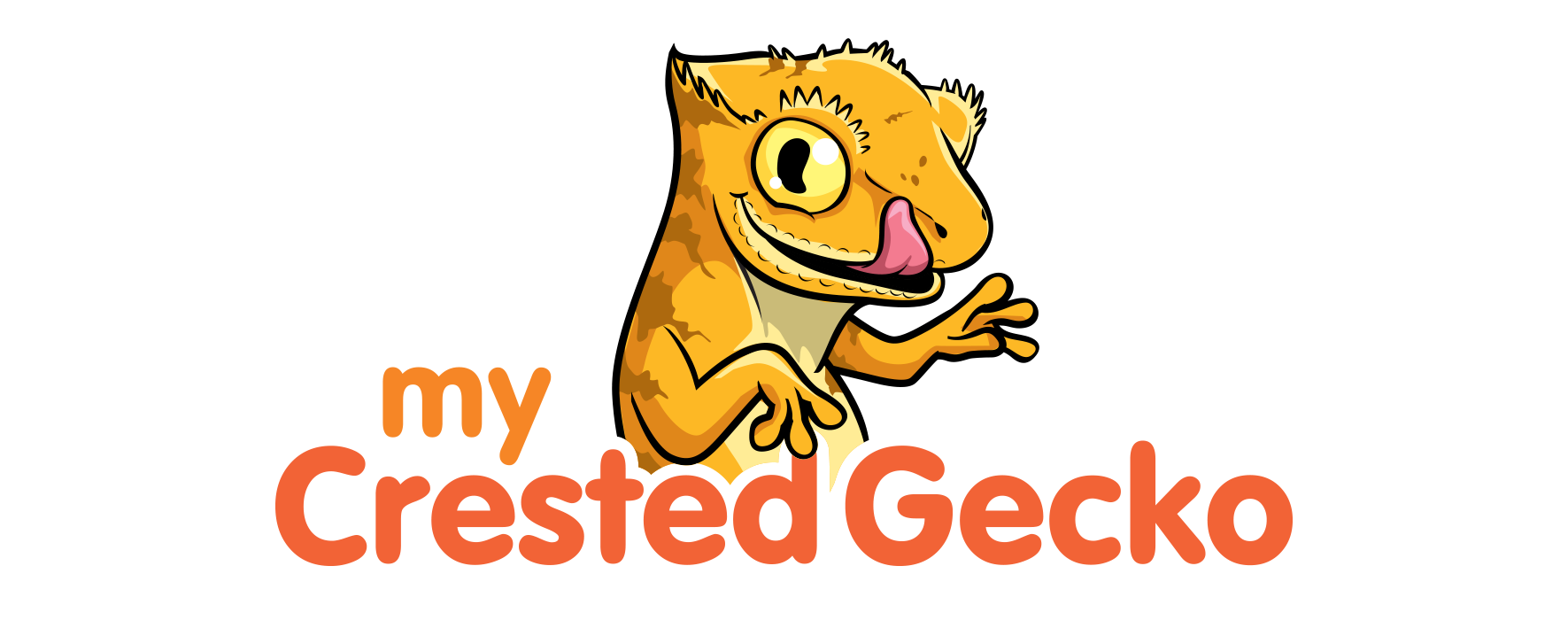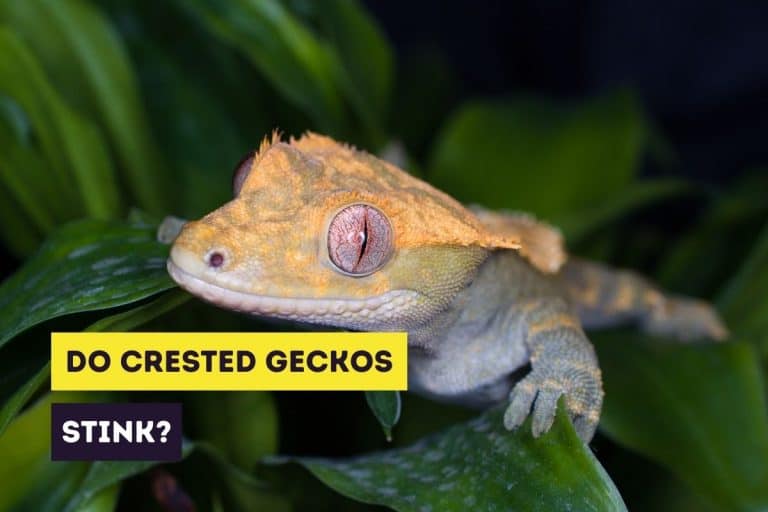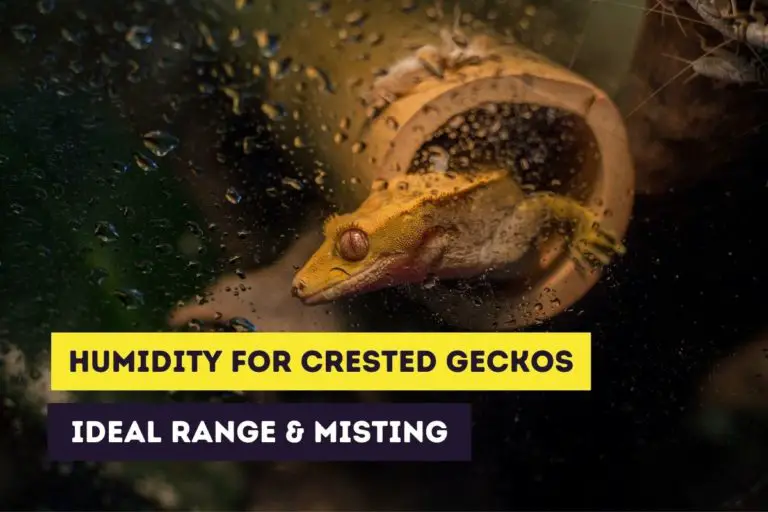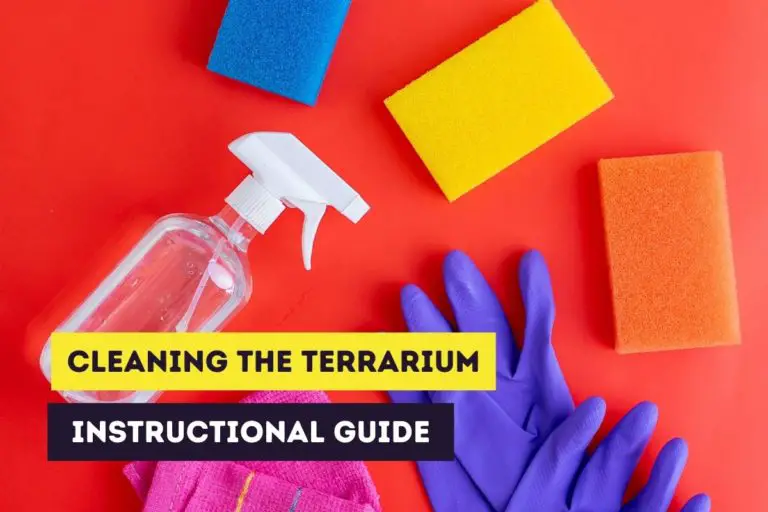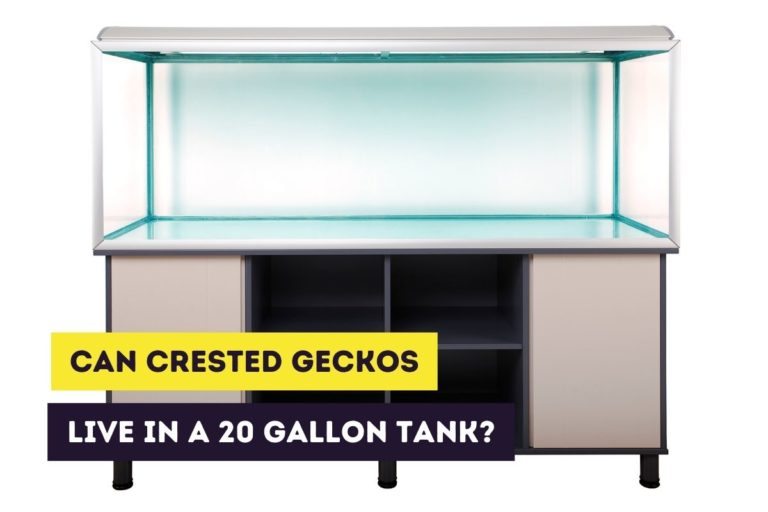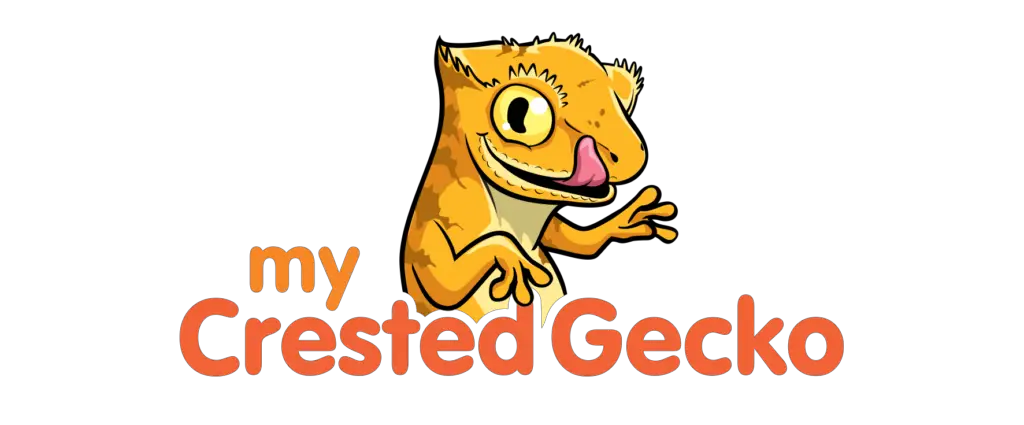Lighting Guide for Crested Geckos (With Tips and Tricks)
Most reptiles need special basking light to receive the right nutrients and stay healthy. Lighting is used for reptiles to provide heat and to help with the synthesis of vitamin D3. Studies have shown the positive influence of light on diurnal lizards. But do crested geckos, being nocturnal lizards, need light?
Crested geckos are crepuscular and nocturnal. A natural day and night light cycle is necessary to regulate the circadian rhythm of your crested gecko. Crested geckos don’t require light at night, although there is evidence that they can benefit from exposure to low levels of UVB light.
So, although crested geckos don’t need special light fixtures themselves you should have the proper light to let live plants grow. Even when you’ve got just fake plants and branches you might want to have a light fixture to view your crestie at night.
There are also people that want to give their crested gecko access to a UVB light. This is possible but you have to use the right light to stay safe.
If you’re interested in stickers or other products of crested geckos, you can always visit our Etsy Shop, which is called Artful Animalia. We currently only send stickers in the United States. If you’re interested in certain crested gecko-related products, don’t hesitate to contact us.
In this article, you’ll learn why crested geckos (don’t) need light and what kind of light can be tolerated by them. You’ll also learn what kind of light is needed when you keep live terrarium plants and where you can buy the necessary equipment.
This site contains affiliate links to products we recommend and use ourselves. We may receive a commission for purchases that you make through these links. If you’re interested in learning more about our affiliate links, please visit our (affiliate) disclaimer.
Do Crested Geckos Need Light?
Natural environment
Crested geckos are native to the south of New Caledonia. Populations of crested geckos are found on three separate locations:
- Isle of Pines
- Blue River (Grande Terre)
- south of Mount Dzumac (Grande Terre)
Crested geckos are crepuscular lizards that spend most of the night being active with dawn and dusk as the peaks of activity. To determine whether or not crested geckos need light to be healthy it’s a good idea to take a look at the average length of daylight in their natural environment. As you can see in the table below, New Caledonia has an average length of daylight between 10 and 14 hours depending on the season.

Crested geckos are most active at twilight periods, so at dawn and dusk. So crested geckos don’t get a lot of exposure to sunlight in the wild. Most of the daytime they will spend sleeping under the cover of leaves or branches.
At night crested geckos will also be active and at that time they only have the moon and stars to lighten up their environment. But crested geckos are used to living in dark environments and can see just fine.
How important is light for crested geckos?
Although crested geckos are active during periods with little light this doesn’t mean that light doesn’t play an important part in their life. In fact, both heat and light play a very important role in the life of your crested gecko.
A crested gecko will wake up when the sun goes down and will stay awake until the sun goes up. This biological clock or circadian rhythm is determined by several factors and light (and heat) plays an important role in it.
When you keep a crested gecko in a room without windows and you don’t create a natural day/night cycle this clock can be deregulated. A crested gecko with a messed up biological clock can become stressed and get health issues.
So crested geckos need a light cycle to know when to wake up and go to sleep but they, in general, don’t need the associated heat that some lights provide. Crested geckos do very well at room temperatures and will only need extra heating when the terrarium is in a cold room (for example, if you live in a colder region).
Do crested geckos need UVB light?
A lot of research has been done on the lighting needs for diurnal lizards. Diurnal lizards are active during the day and a great example is the day gecko. In short, diurnal lizards need special UVB lights in their terrarium because it helps promote natural behavior and helps with the synthesis of vitamin D3.
But it’s poorly understood if crested geckos as nocturnal lizards need UVB lights and for how long they need them. There are a lot of different views on the need of crested geckos to get UVB light. Some will say that it’s beneficial to give a little amount of UVB light while others say it’s not necessary.
So a lot of breeders and crestie owners don’t use any UVB light and their crested geckos do just fine. Others use UVB lights for a short amount of time, for about 4 to 6 hours per day and their crested geckos also turn out great.
Do crested geckos need light to see?
Crested geckos can see in the dark but if you keep your crestie in a room without any windows it’s better to still have a form a terrarium light. This light will help you look at your crested gecko at night but will also help your crested gecko see a little bit better.
A little side note is that it’s possible that your crested gecko doesn’t become very active when the so-called night lights are turned on. For example, I’ve used the Exo Terra Day & Night Led and noticed that a crested gecko will become more active when you leave the led light out during the night.
So in my case, the terrarium receives only light from the windows and a crested gecko seems just fine and can see and explore the terrarium with very little light.
Why Would You Use Lighting in a Crested Gecko Terrarium?
So crested geckos that are housed in a room that has windows that create a natural light cycle don’t need really need a light in their terrarium. But this doesn’t mean that lights can’t be beneficial for your crestie.
Lighting fixtures can be useful or even necessary for four main reasons:
- promoting natural behavior
- getting vitamin D3
- stimulate plant growth
- view your crested gecko at night
Lighting fixtures can also provide heat and in certain regions, it can be necessary to provide heat to the terrarium. If you want to learn more about heating a terrarium you should definitely check out our heating guide.
Promoting natural behavior
In the wild, crested geckos experience a natural day/night light cycle and during the day they hide and sleep. If you house your crested gecko in a windowless room or a room without a lot of daylight, this might mess up the rhythm of your crestie.
To stimulate the natural behavior of your crested gecko you can invest in a lighting fixture that provides full-spectrum light, just like sunlight.
Getting vitamin D3
Vitamin D3 can be obtained through vitamin supplements or diet but reptiles (and humans) also get vitamin D3 through exposure to the sun. Reptiles have cholesterol that’s called pro vitamin D (or 7DHC) in the skin and when this cholesterol is exposed to UVB rays the cholesterol is turned into a pre-vitamin D. When the skin is exposed to warmth the pre-vitamin D is converted into vitamin D3.
A small amount of UVB light can aid in the production of vitamin D3. But you do need to understand that the meal replacement powders already contain the necessary nutrients (including vitamin D3) so most crested geckos won’t need this extra UVB light.
Stimulate plant growth
If you choose to get live plants in your terrarium, you’ll need to understand that plants need light to grow and stay alive. Not all plants need a lot of light but they do need some. Plants in the wild are exposed to natural sunlight, which is a full spectrum of light. Indoor plants need the same full-spectrum light to grow.
Plant nurseries and garden centers use two kinds of lights to provide this full-spectrum light:
- LED lighting: usually has a higher cost but is more environmentally friendly, uses half of the electricity of fluorescent lighting, and lasts a lot longer.
- fluorescent lighting: has a lower startup cost but is less energy efficient. Fluorescent lighting also has a shorter lifespan than led lighting.
Plants don’t need UVB light but they do need light to grow. Some more than others but if you want to keep live terrarium plants you should get a light to keep them healthy and strong.
View your crested gecko at night
When you want to view your crested gecko at night, you’ll have to have really good eyes or use a lighting fixture. There are some night lights such as the Exo Terra Day & Night Led (Amazon) that let you see your crested gecko without disturbing it too much in its natural behavior.
As I already mentioned, it’s possible that you don’t need this light because your crested gecko is more active without it. In such a case, there is another option to keep an eye on the nocturnal activities of your crestie, like using a night vision (web)cam. I use the Wyze cam (Amazon) which is a fairly cheap and reliable night vision camera and is easy to use.
Terrarium Lighting Guide
If you choose to use UVB lighting in your terrarium you’ll need to know a little bit more about light and what kind of light you can use.
Light basics: UVA, UVB, and UVC light
The ultraviolet (UV) spectrum consists of three different parts:
- UVA: this light is associated with the circadian rhythm of reptiles and will help your crested gecko with regulating its natural behavior.
- UVB: this light is important for the synthesis of vitamin D3, an important vitamin for reptiles.
- UVC: this is a part of the light that’s not required for reptiles and can even be dangerous for your reptile when exposed to in high amounts. The UVC light can kill bacteria.
UVA, UVB, and UVC light is all found in natural sunlight. Reptiles will need the UVA and UVB light to stay healthy but not all reptiles need the same amount of light. Any lightbulb will emit UVA light so the only real concern you’ll need to have is what kind of UVB light you choose.
Ferguson zones
Important research on the UV needs of reptiles was done by Dr. Ferguson. This research was done by observing the activities during the day of 15 different species of reptiles. The Ferguson zones are also called the “UVB zones” and there are four different zones:
- crepuscular or shade dweller (zone 1)
- partial sun/occasional basker (zone 2)
- zone 3 for open or partial sun basker (zone 3)
- zone 4 for mid-day sun basker (zone 4)
Crested geckos fall in zone 1 and are in the UVI (a unitless UV index) zone range from 0 to 0.7.
This will be important to determine what kind of UVB light you can use and at how much distance it has to be placed for your crested gecko to stay healthy.
What kind of UVB light is safe for crested geckos?
There are different brands that sell UVB lighting for crested geckos and not all use the same terminology. Below you can find some of the most common brands and the lights that are suitable and safe for use with crested geckos.
The (fluorescent) bulbs usually come in “2.0”, “5.0”, and “10.0” versions. The numbers are percentages of UVB output of the bulbs. Both 2.0 and 5.0 are safe to use if you respect the distance between the light and the “basking spot”.
You can check the guide from Zoo Med to get the distances for the 5.0. DON’T use the 10.0 because these lights are for desert species or very large terrariums. The 2.0 is more than suitable for the sizes of an average crested gecko terrarium. The 5.0 needs to be placed far enough from the terrarium to stay safe.
Remember that the bulb wattage depends on the temperature of your room and also on the size of your gecko’s terrarium. As a guide, a 20-gallon tank will need a 26-watt bulb.
Photoperiod
The length of exposure to light, which is also called the photoperiod, is crucial. It’s best to recreate the photoperiod of the natural environment of your crested gecko. You can turn off the lighting yourself or use a power center. Power centers allow you to control the hours of light and darkness with ease.
What about night lights?
You can get bulbs specifically for all-night use; these come in red (infrared) and blue spectrum (moonlight). These should only be used for brief periods in the evening or early morning to heat the terrarium. This is because these lights can disturb your gecko’s normal nocturnal behavior. Try instead a red-colored glass bulb as the light will be less harsh and disruptive – you’ll still get to view your geckos in a cool, creepy light.
How to set up lighting in a terrarium
UV light will be filtered through glass and plastic so you need to place the lighting in a place where it doesn’t get filtered. Most terrariums have screen tops to provide ventilation and this top also allows the UV light to pass through.
You can use two kinds of fixtures to provide lighting in a terrarium:
- a dome lamp fixture: this kind of fixture is fitted on top of the terrarium’s screen cover. The most popular brands as Repti-Zoo, Zoo Med, and Fluker’s all have this kind of fixture.
- a canopy fixture: this kind of fixture is ideal for compact fluorescent bulbs. It provides light for the entire terrarium and is perfect for larger terrariums.
Best Lighting for Crested Geckos
If you’re looking for a UVB light for a crested gecko your best choice is the Zoo Med Reptisun 2.0. It’s a fluorescent light that provides both UVA and (low amounts of) UVB light.
Another popular UVB light was the Exo Terra Repti Glo 2.0 but this bulb has changed to the Exo Terra Natural Light. However, this new version doesn’t emit any UVB light. It’s still a good choice if you only need a light for your plants and to view your crested gecko. Since crested geckos don’t necessarily need UVB light it’s also a great choice.
Tips and Tricks for Using Lighting
Now that you know what lighting you need for your crested gecko, you can use the following tips and tricks to get most of it:
- don’t position the terrarium in direct sunlight: direct sunlight is bad for your crested gecko because the glass will filter out the light but the heat of the sun on the glass will cause the terrarium to overheat fast. Crested geckos can’t tolerate temperatures above 85 °F and can easily suffer from heatstroke.
- incandescent bulbs can generate heat: when the temperature in the terrarium is in the ideal range, you don’t need to provide extra heat. Incandescent light bulbs can generate heat so you need to be careful and keep an eye on the terrarium temperature.
- never use blacklight (UVA) bulbs: blacklight bulbs give off UVA wavelengths and these can cause serious damage to the eyes, skin, and immune system of your crested gecko.
- don’t use mercury vapor or halogen bulbs: these kinds of bulbs emit heat and this will stress out your crested gecko and can cause heatstroke.
- regularly replace the (fluorescent) bulbs: the UV output of the bulbs will diminish over time so the bulbs will need to be replaced after 3,500 hours (usually around 12 months).
Want to Learn More?
If you want to learn more about crested geckos as pets, please read the following articles.
If you’re interested in getting crested geckos as pets you should also definitely read our article about baby and juvenile crested gecko care or (adult) crested gecko care.
